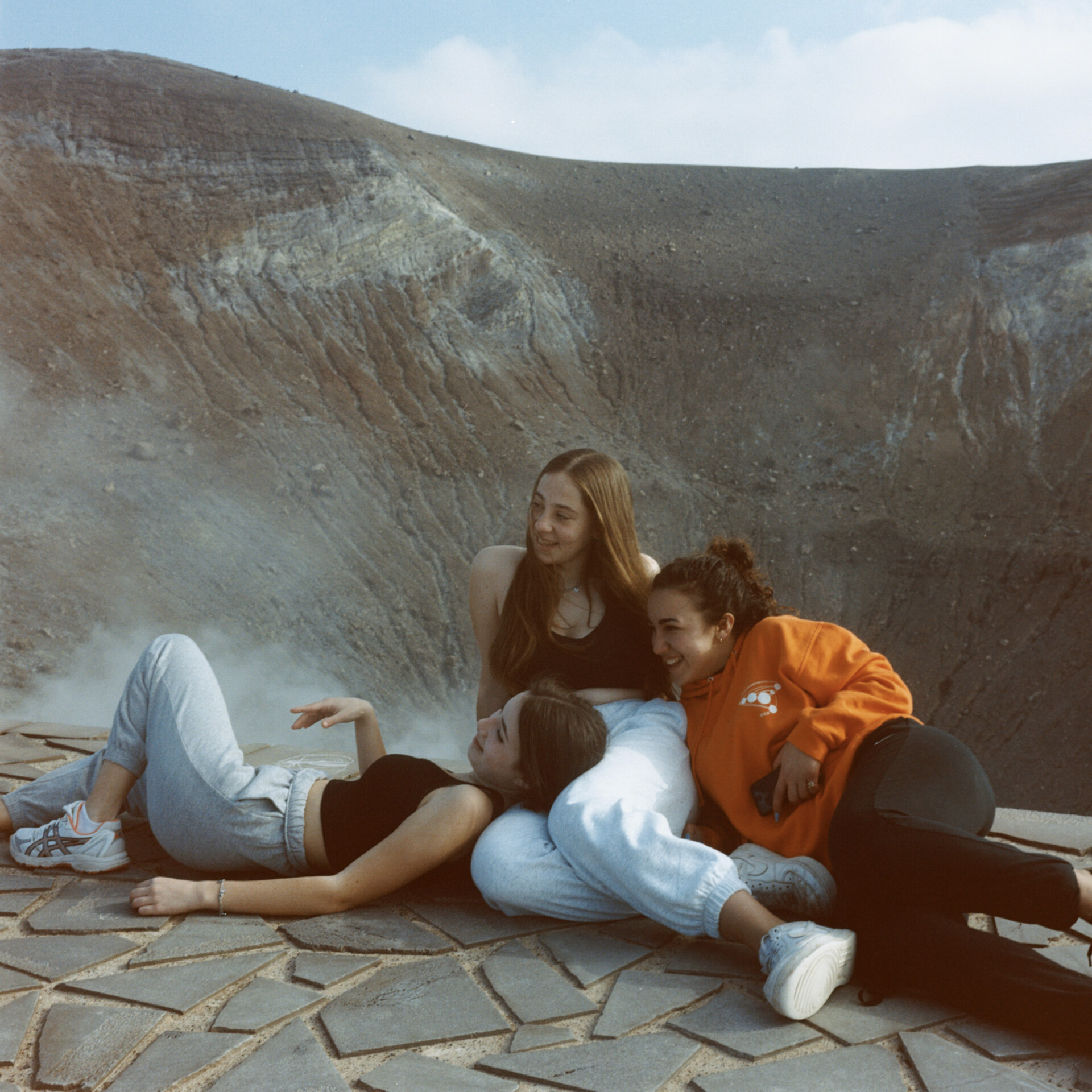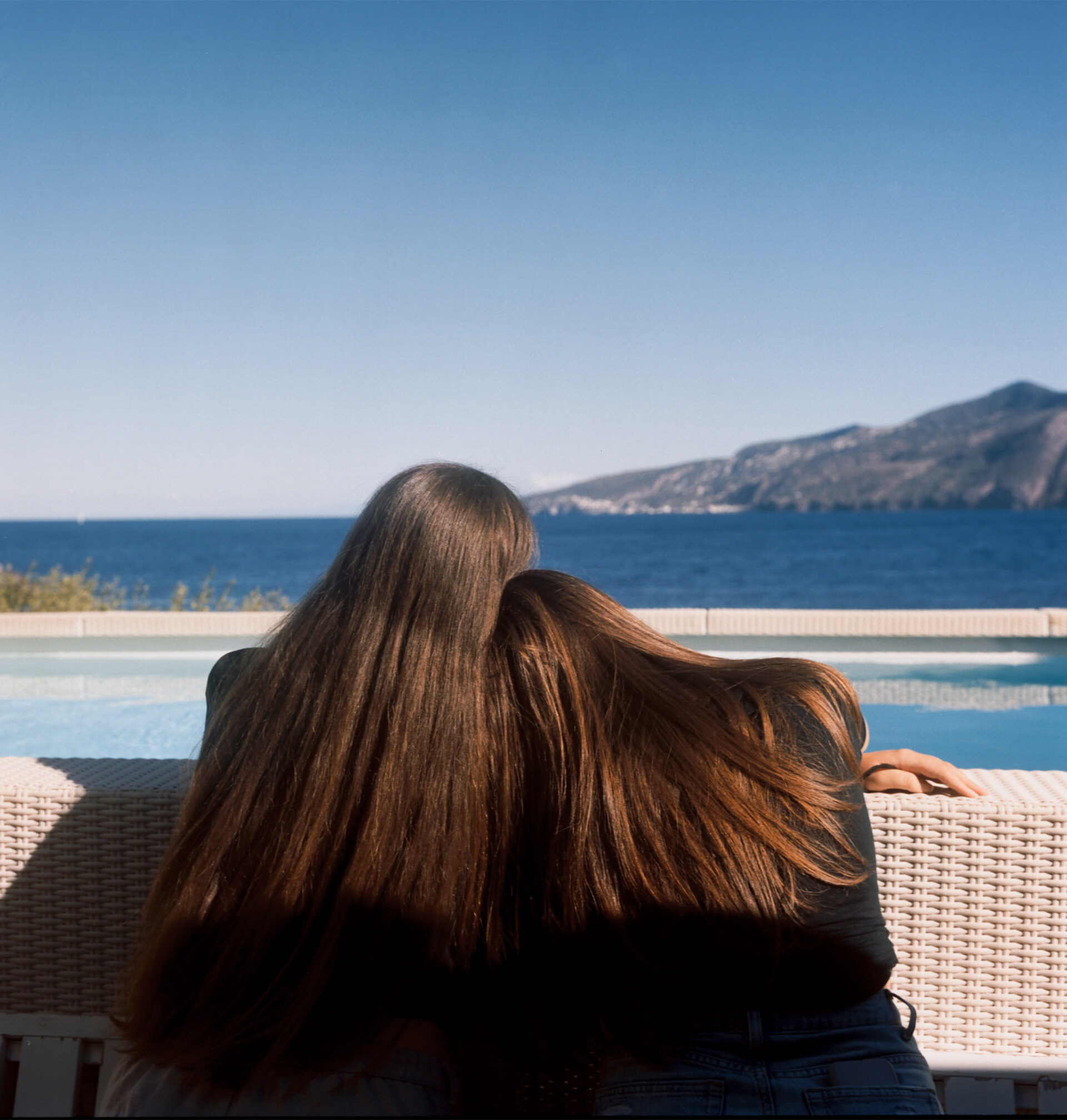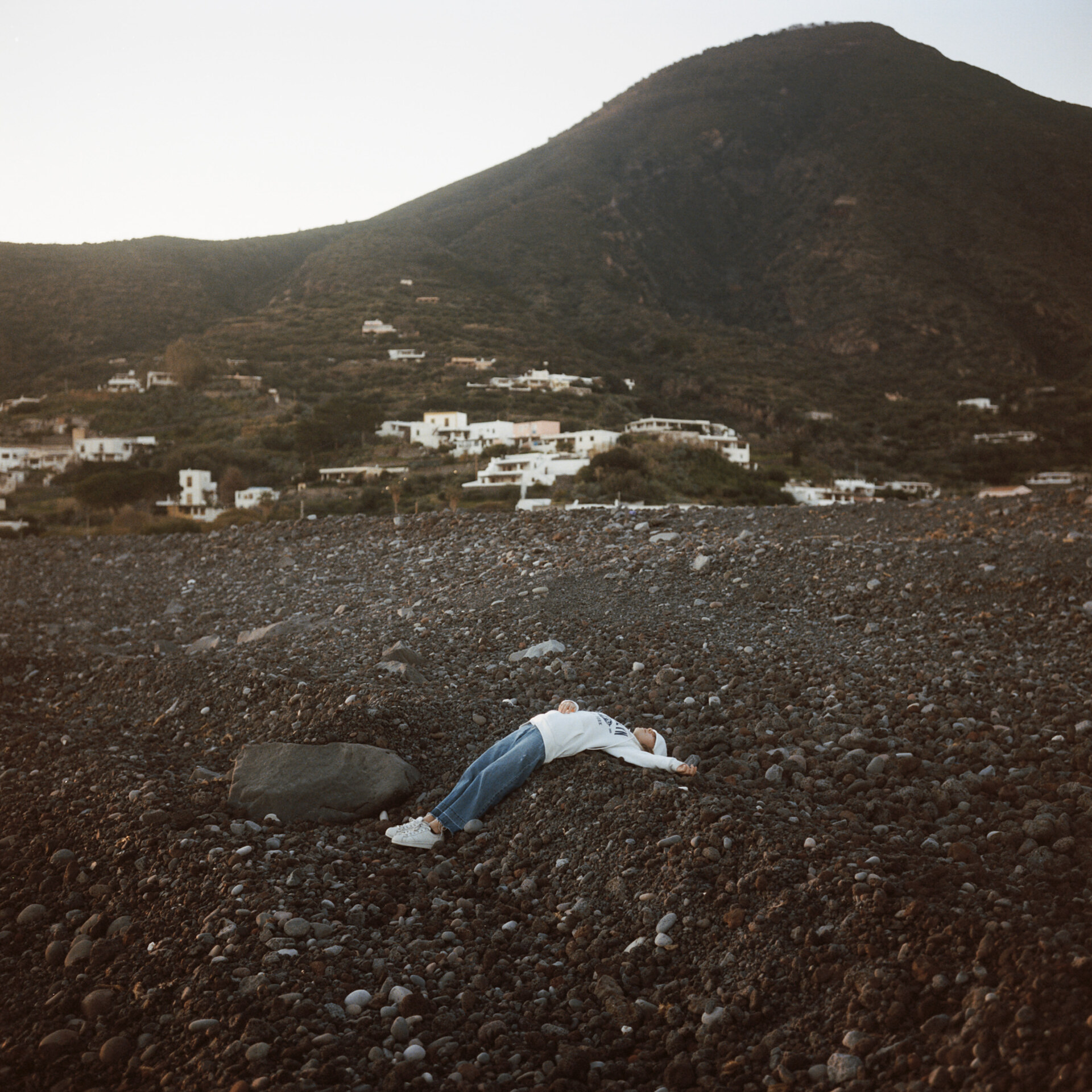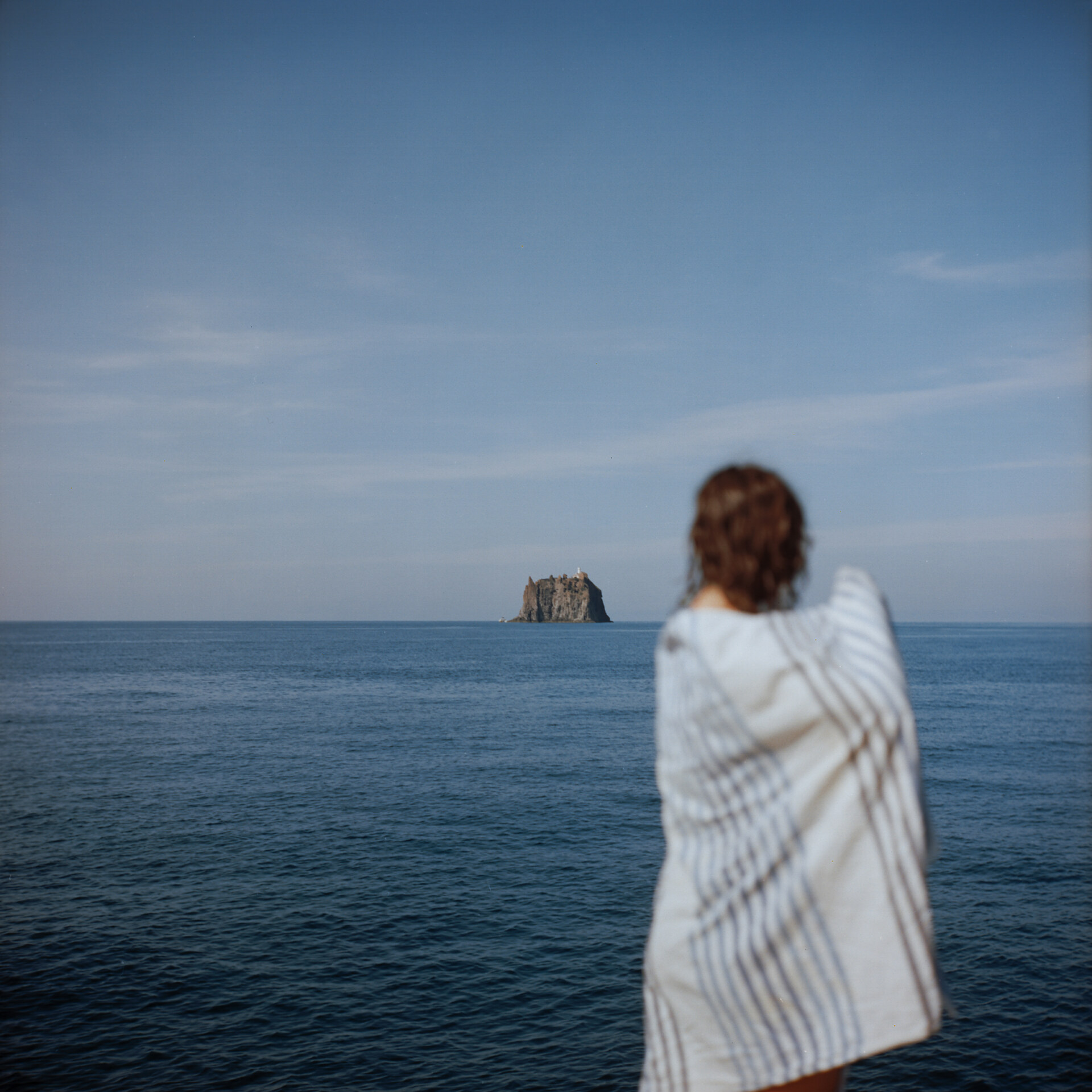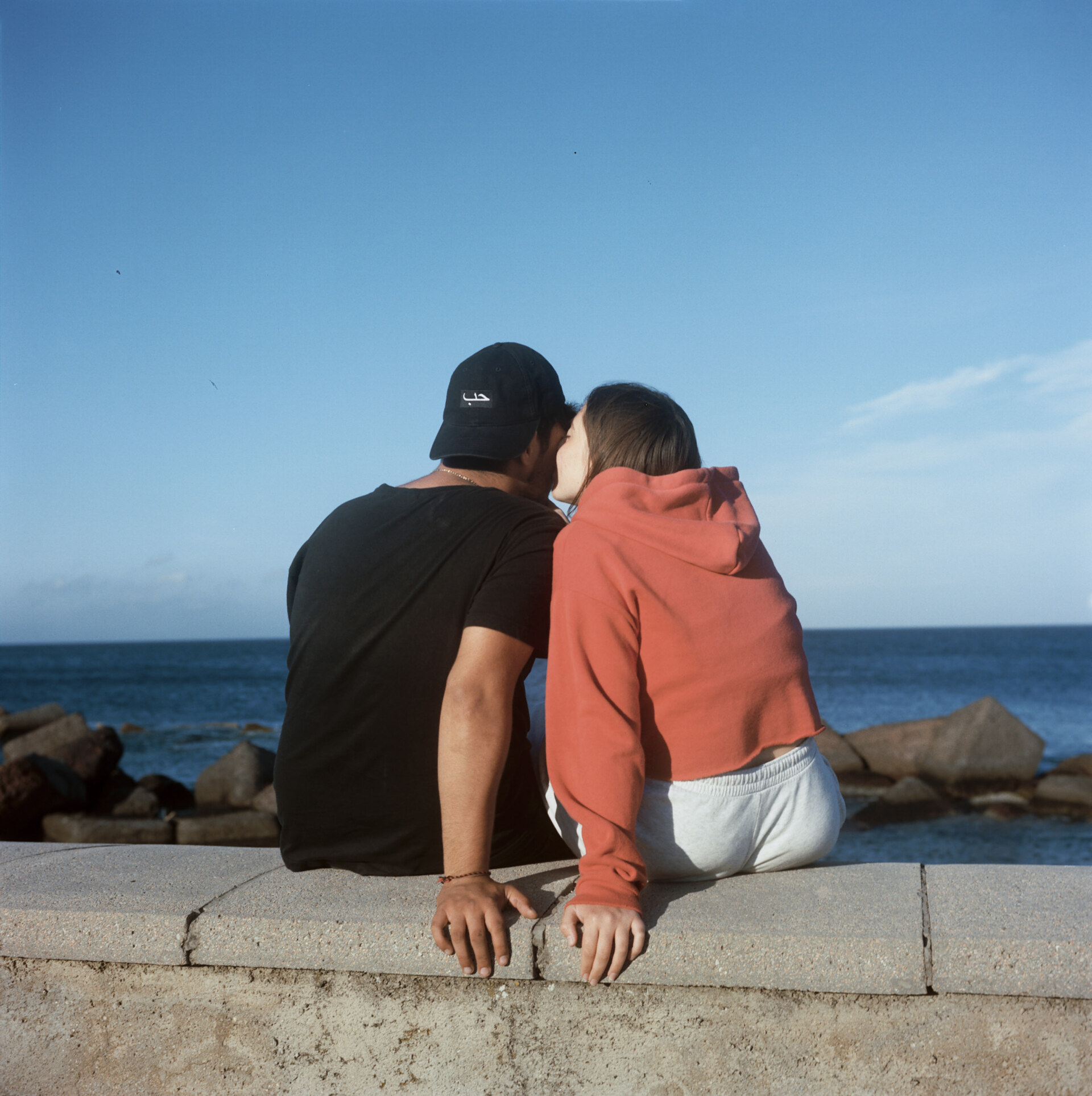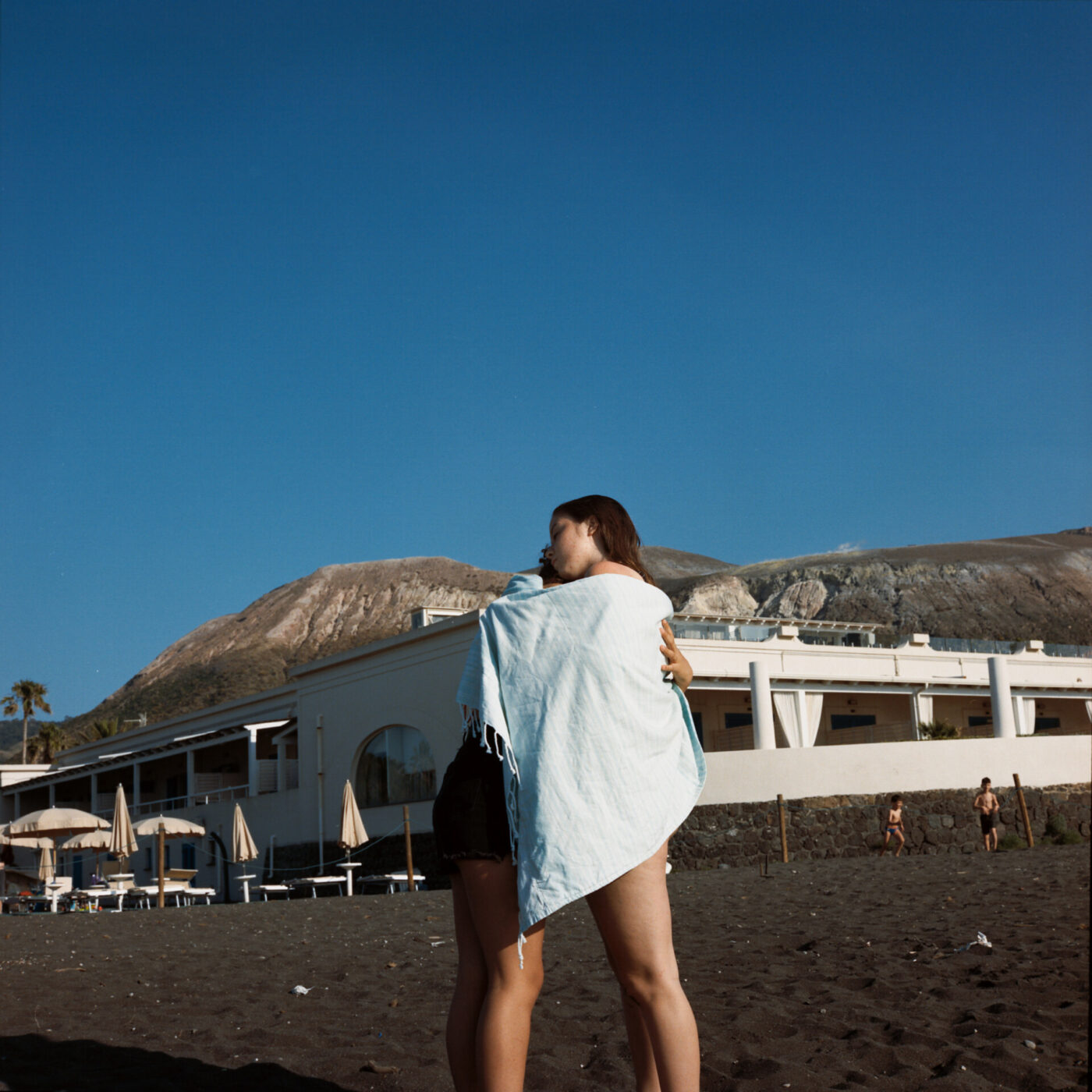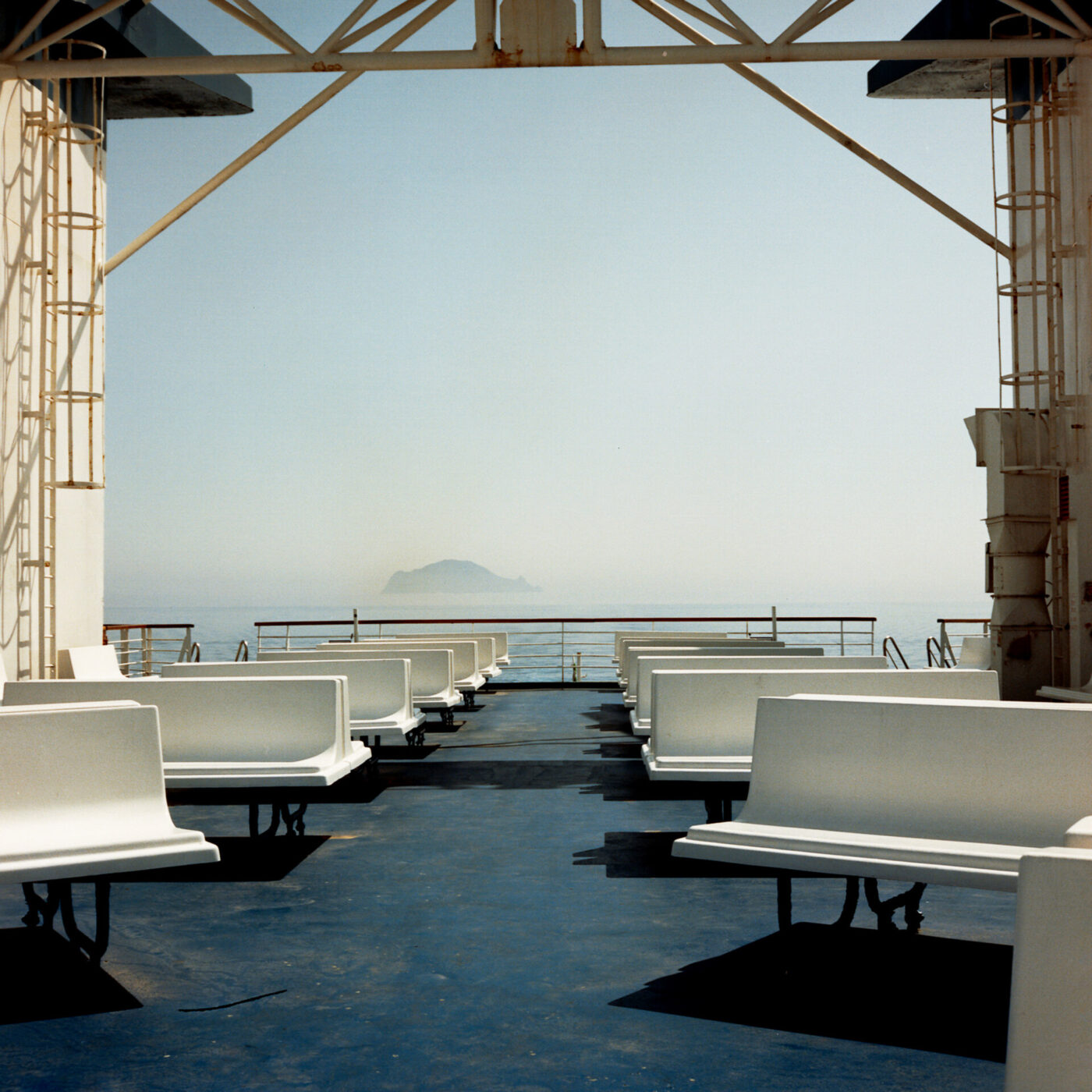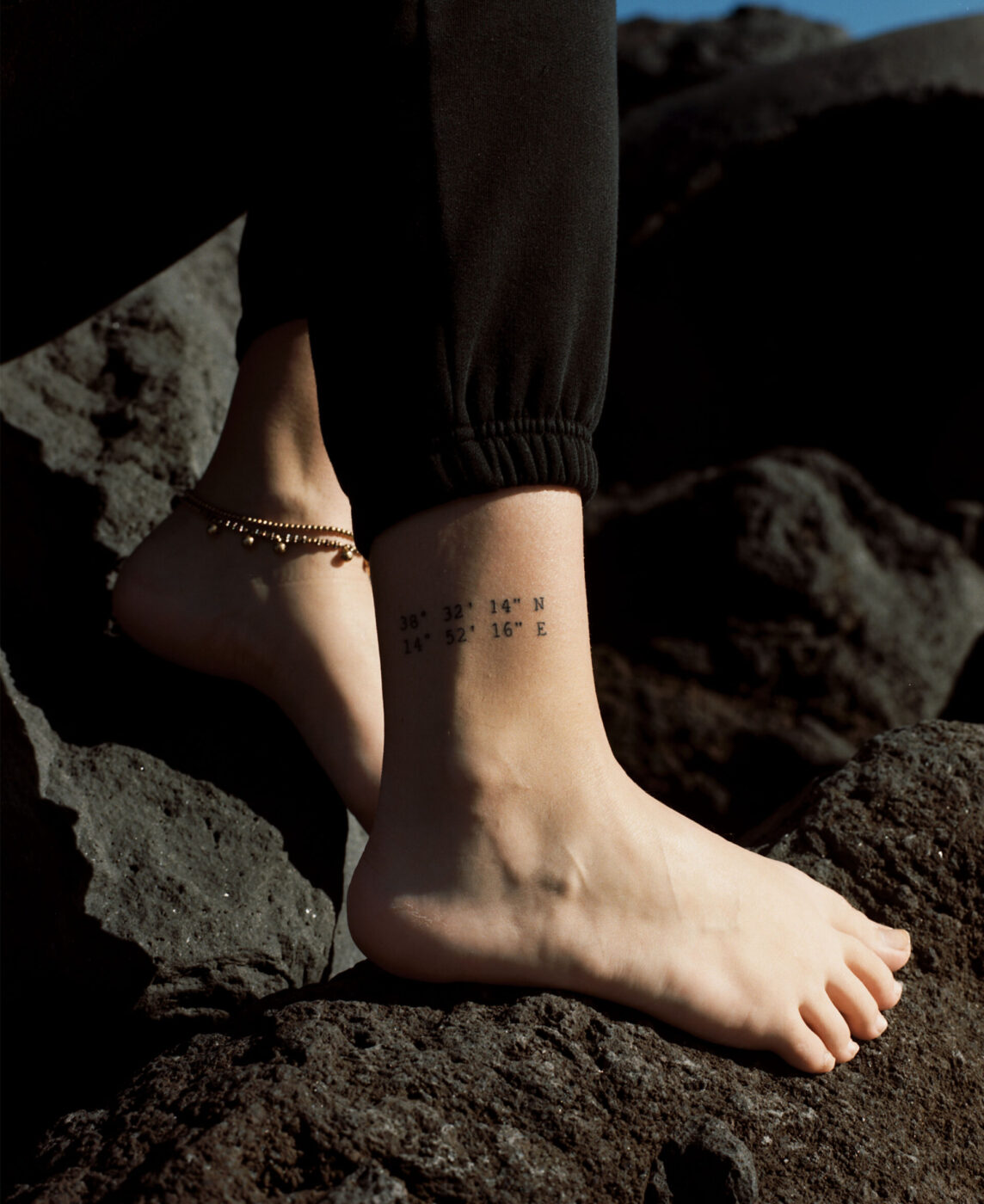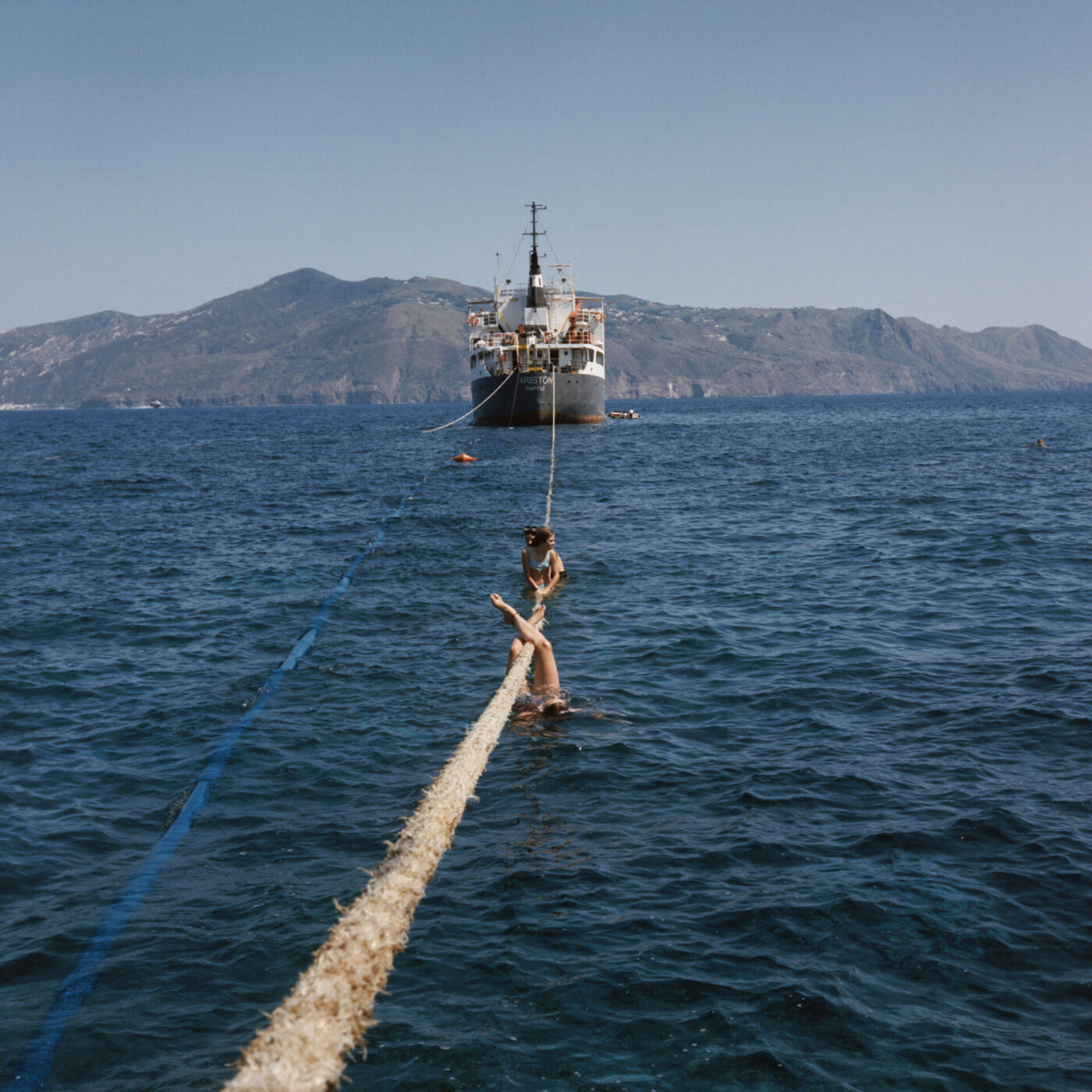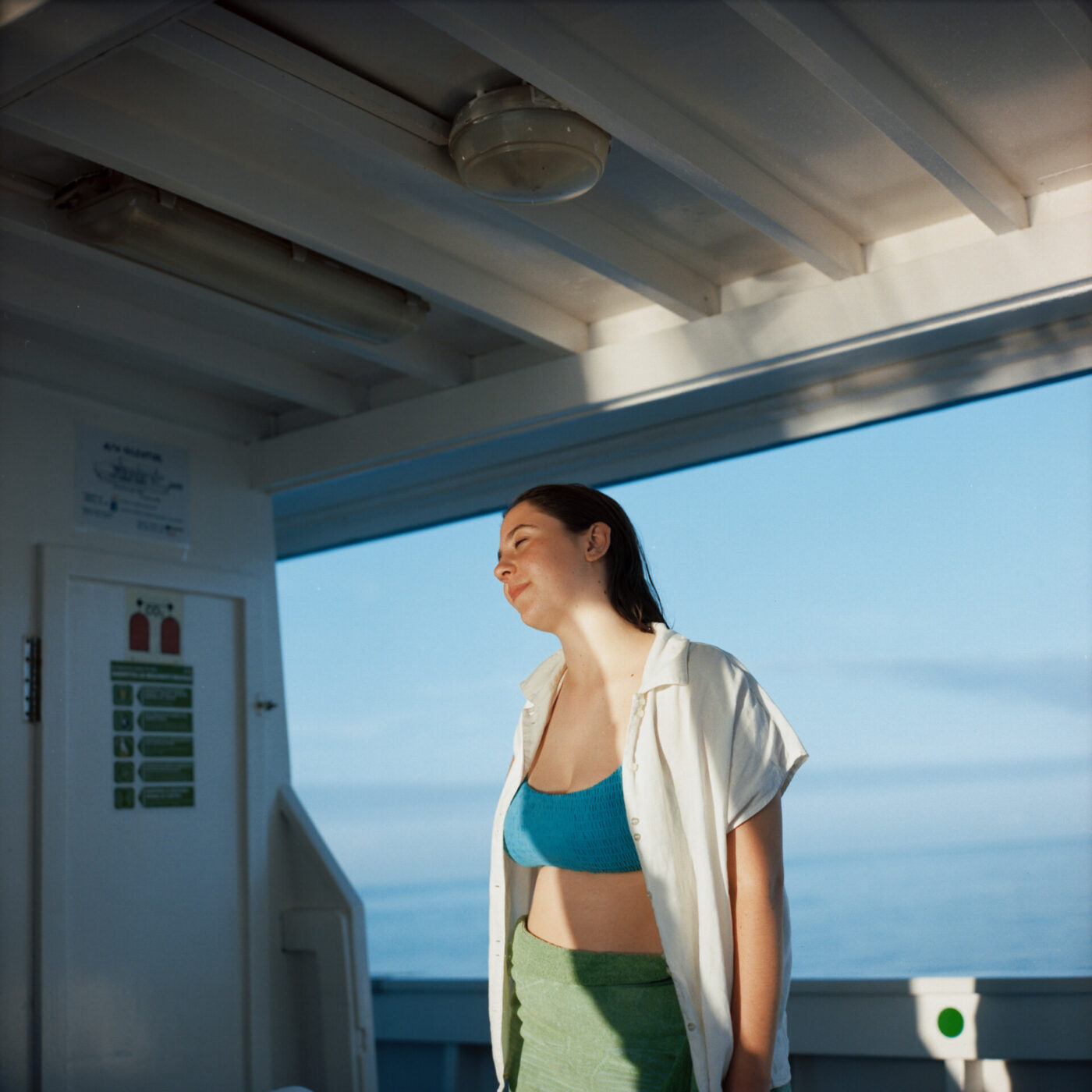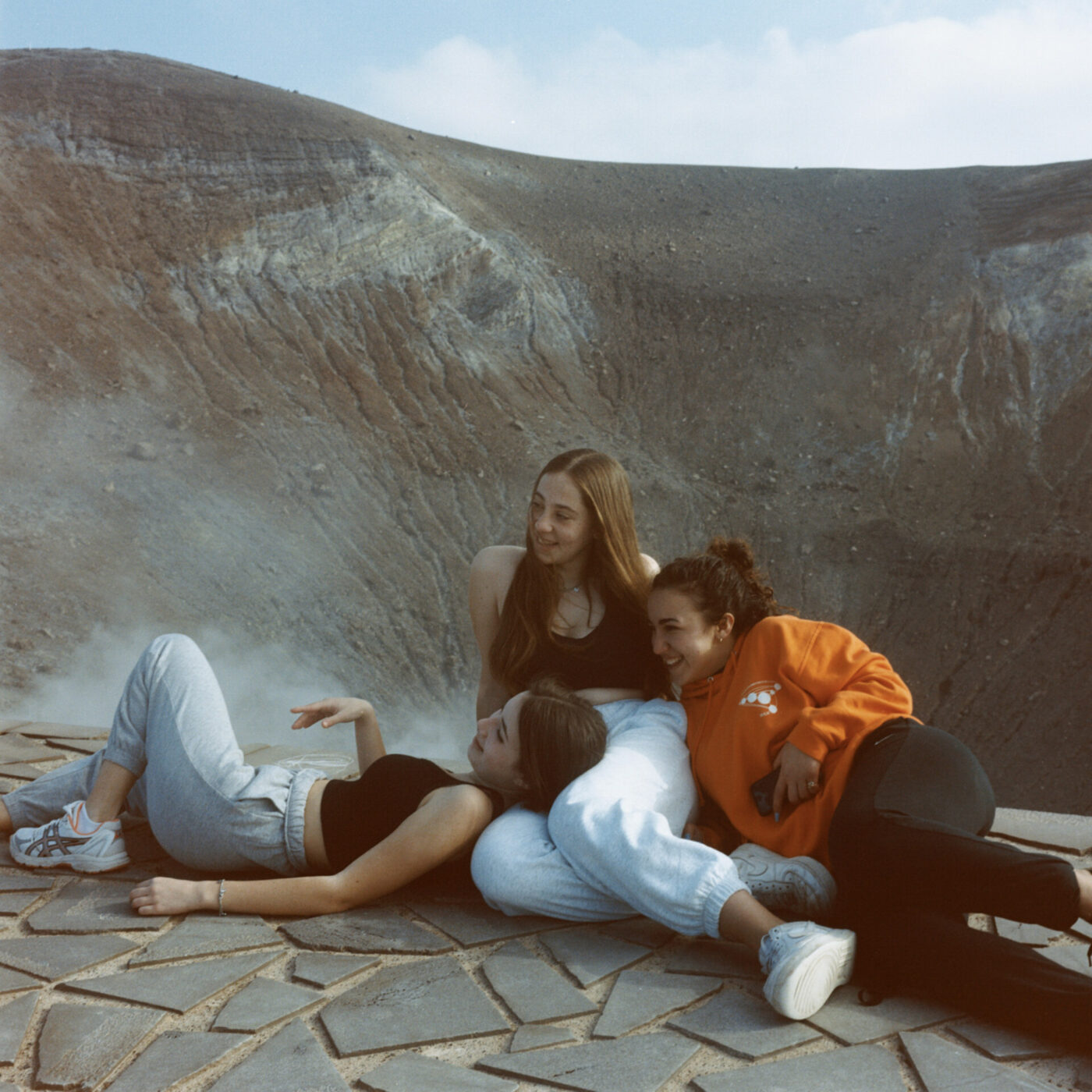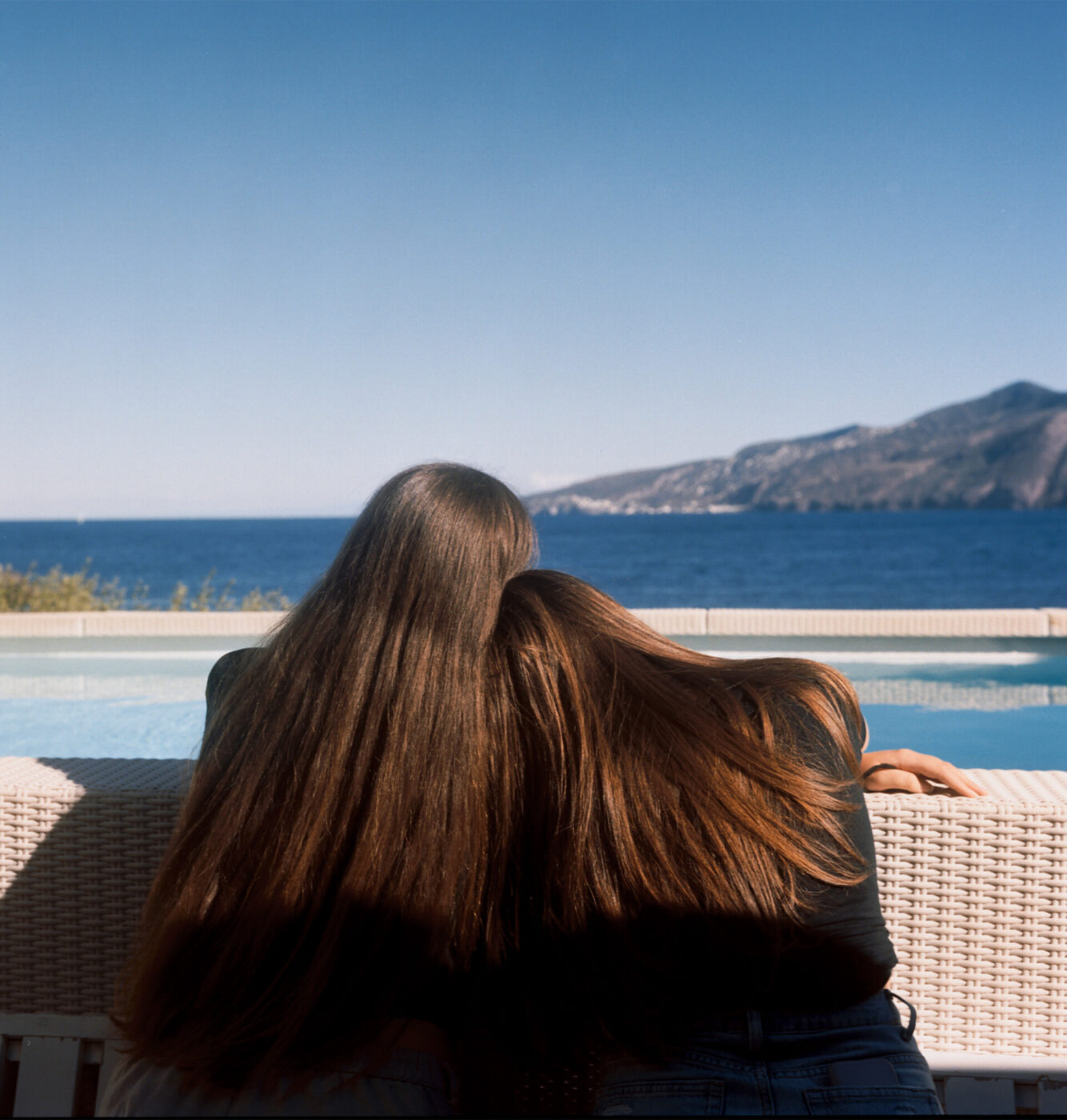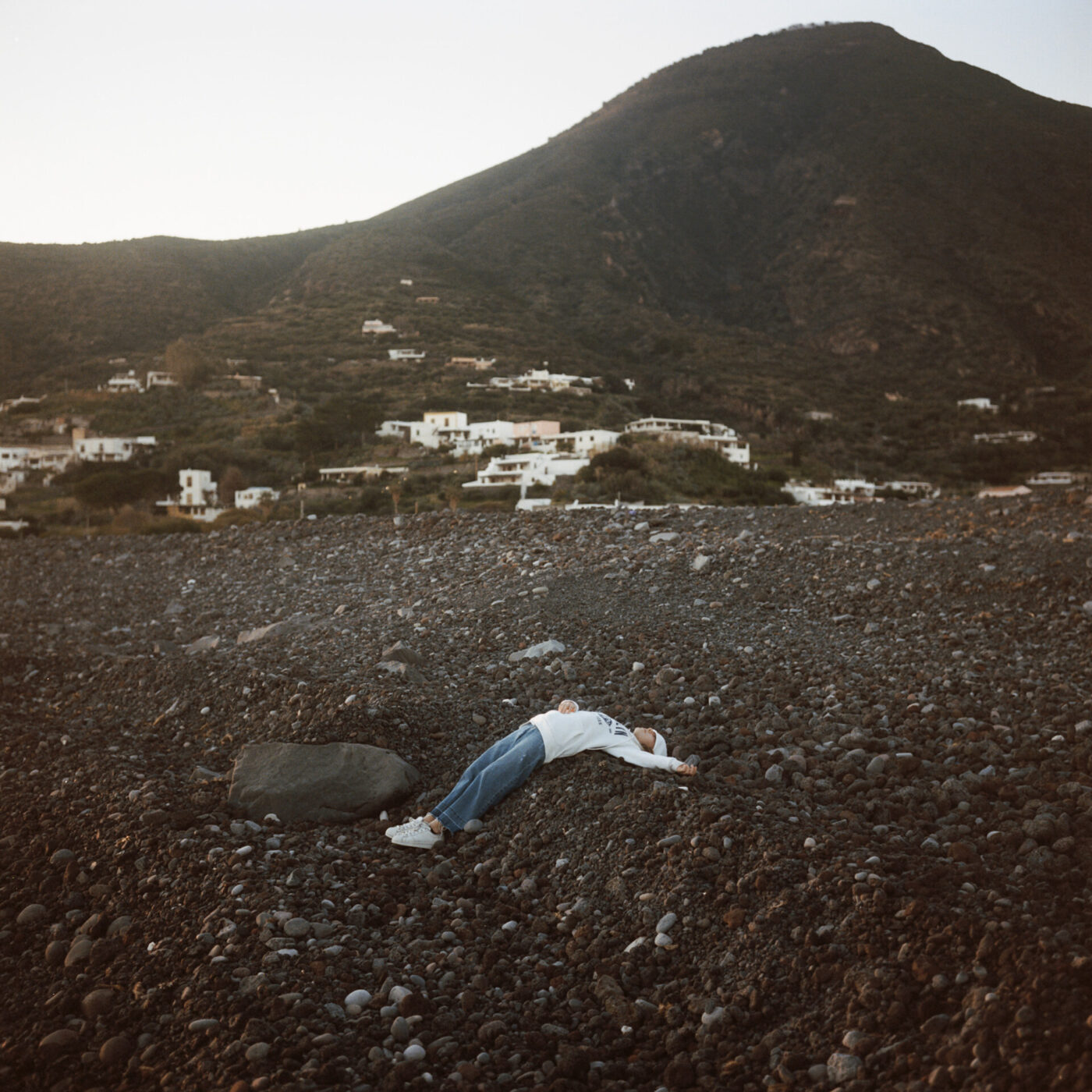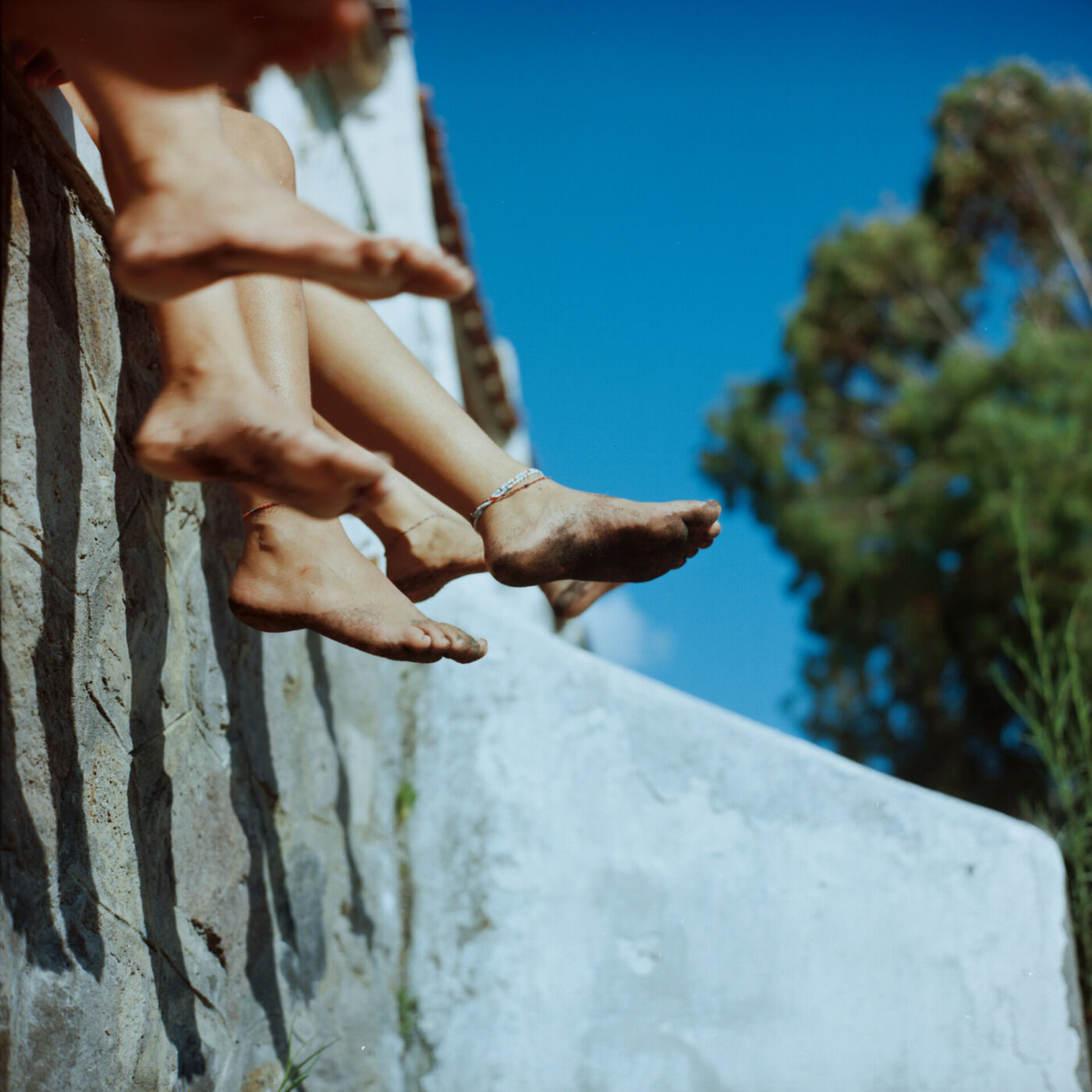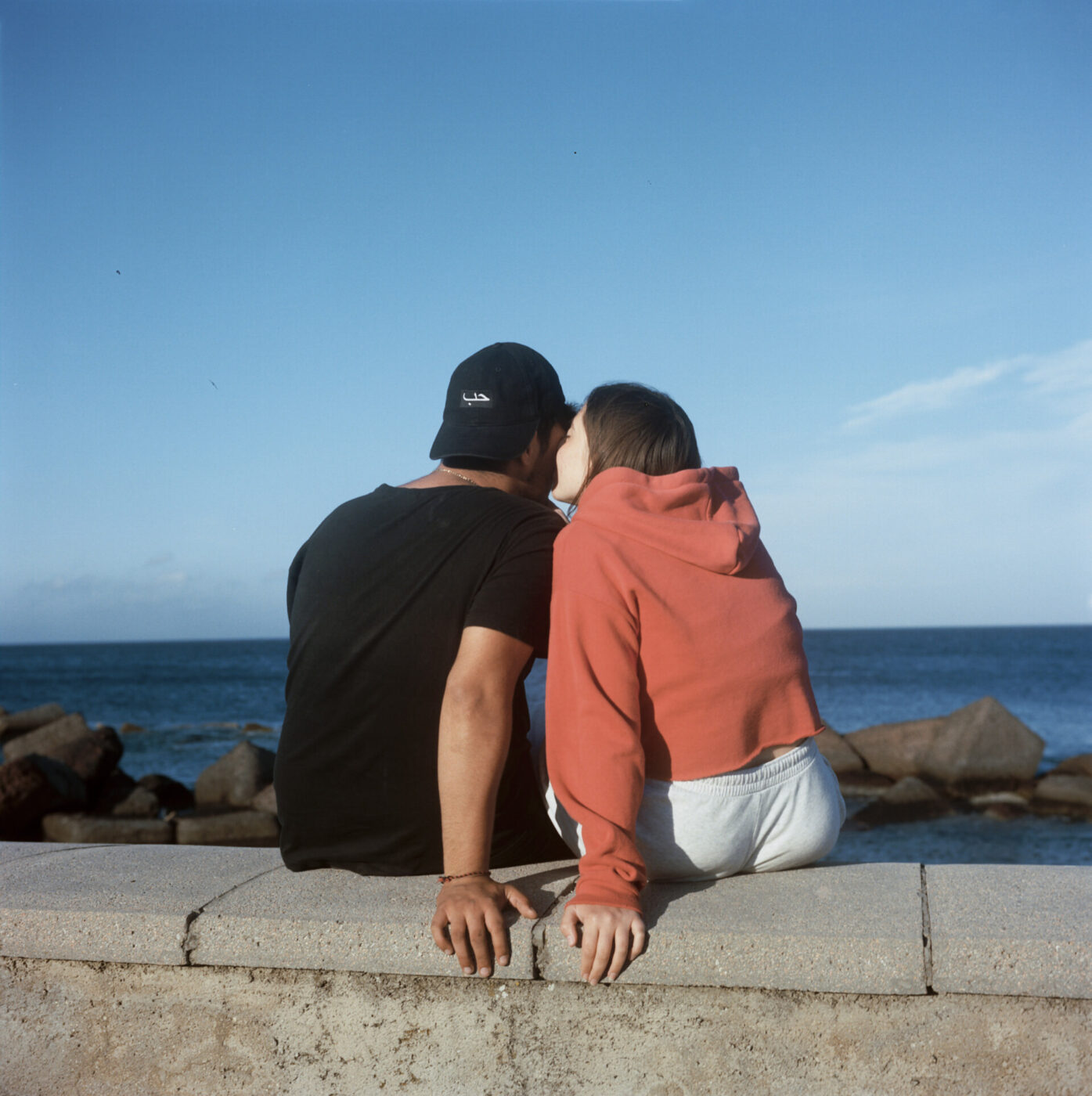A first kiss. The transition to high school. That time the boat ran out of gas at sea… Documentary photographer Giulia Frigieri has witnessed all manner of moments that define those tender adolescent years in the time she has been photographing teenagers living on the Aeolian Islands. Here, daily life plays out against the unpredictability of living under two explosive volcanoes in the archipelago. And yet, these free-spirited young people embrace this sense of uncertainty as a natural part of life on the lands and seas that have shaped their identity. This idea is at the heart of Frigieri’s ongoing photo series “Generazione Vulcano”.
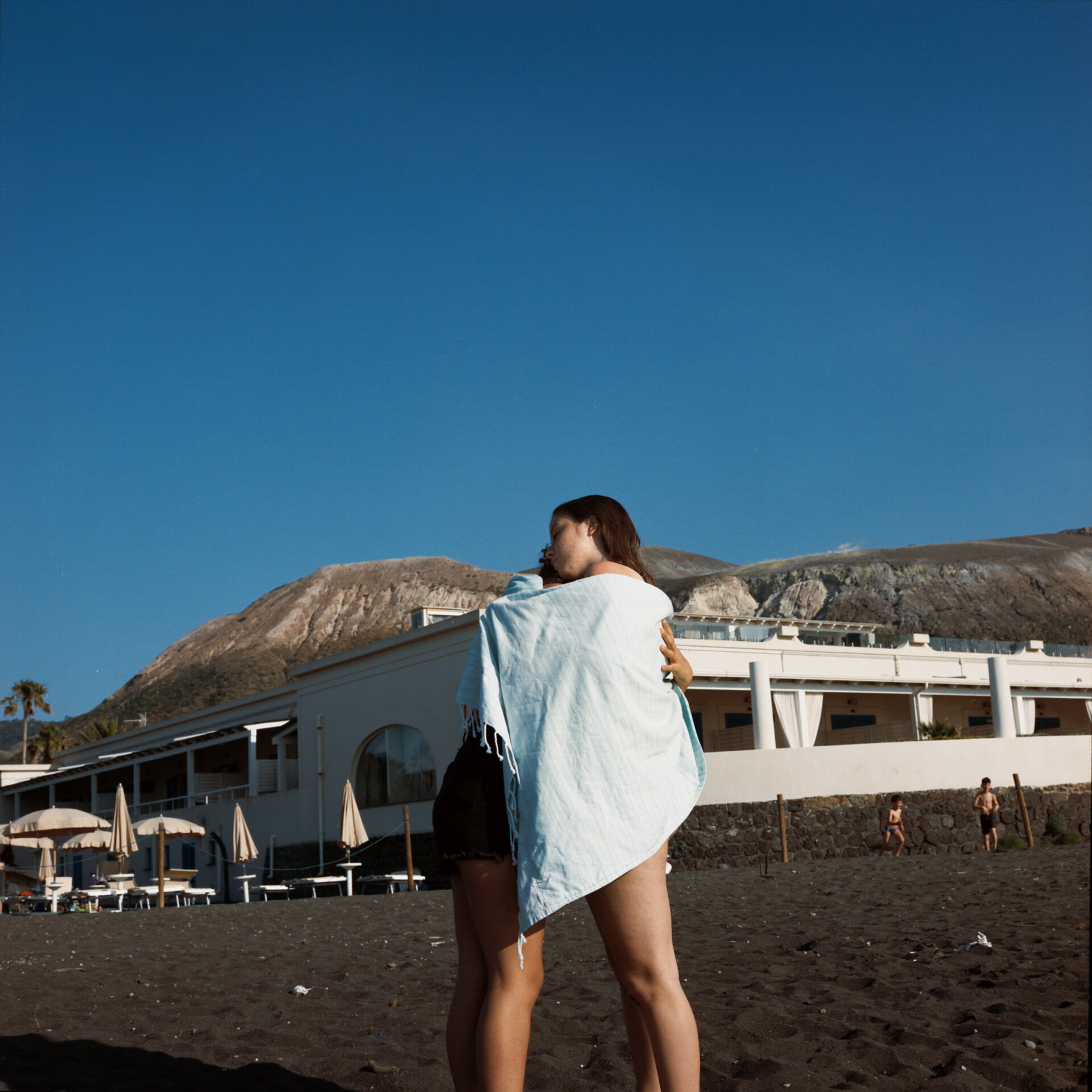
When one thinks of the Aeolian Islands, teenagers probably aren’t the first thing that comes to mind. Untouched beaches where you can hear yourself think, elderly locals with no mobile phones, platefulls of grilled squid, boatfulls of day-trippers with sunburnt shoulders, sure. But teenagers? Come to think of it, do any teenagers actually live there? “I asked a few people who had a connection to the Aeolian Islands about the teenagers living there before my first visit in 2021, and they said there weren’t any. I thought that was just incredible. I was curious as to why nobody seemed to be paying any attention to the youth living on the seven islands,” reflects Frigieri.
Nicolò, Ilana, Giacomo, Chiara, Celeste, plus brothers, sisters, and friends… Indeed, there are teenagers living on the Aeolian Islands, as Frigieri discovered. Her lens offers a candid snapshot into the lives of this “Generaziona Vulcano”, most of whom live on Salina, Vulcano, Panarea, and Lipari. There are even fewer on the more remote islands of Stromboli, Alicudi, and Filicudi. While “daily life” is often lived at the mercy of weather and the seasons, it’s a comfortable, familiar, and easy existence for these teenagers on their island homes, secluded from the rest of the world. Work is seasonal, family and friends are always close by, and a “take each day as it comes” mindset (without too much concern about living under two explosive volcanoes which could wipe everything out…) brings a certain sense of contentment. Island life is a good life, right?
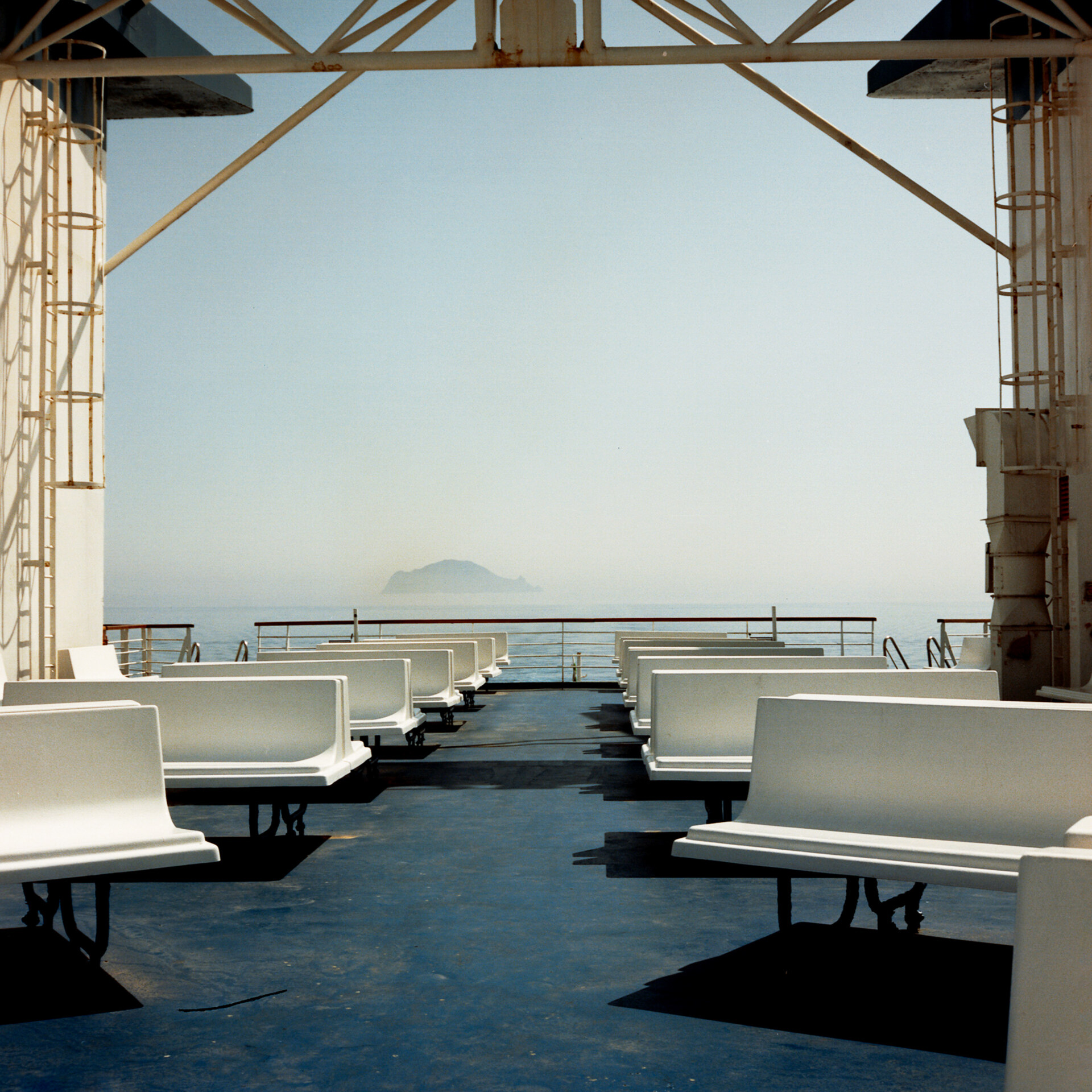
“These kids reach their adolescent years and they’re torn between having this great sense of belonging and their desire to go out and discover the world. Some kids have the chance to leave at 18 for study or work opportunities, inspired by the idea of making a life somewhere else. And others don’t, or they have no interest in doing so,” says Frigieri.
She continues, “Some teenagers fall into a comfortable routine of working during the summer, not doing much over winter, and never leaving the island, especially if they don’t have encouragement or a different perspective from their family. The social dynamics of the islands are fascinating in this sense.”
Originally from Modena and now based in Marseilles, the photographer has lived and studied abroad since first leaving home as a teenager. She has always been intrigued by different upbringings to her own, particularly the idea of growing up in remote areas and communities away from big cities. Frigieri’s studies in anthropology, media, and photojournalism honed her focus on documenting connections between people and place. Her Aeolian Islands project has evolved as an in-depth exploration of the region and its people, giving a voice to the islands’ teenage minority demographic.
Ilana, the oldest of the sisters in the family Frigieri has spent the most time with on Salina, is turning 20 this year. She’s an adventurous soul, always planning ways to travel and see the world, applying for funding grants and scholarships to help support her trips abroad. But no matter how far she ventures from Salina, she never loses her sense of attachment to her beloved island home. She even has the coordinates of Lingua’s lighthouse tattooed on her ankle. Inheriting her active and energetic personality traits from her British mother (who settled on Salina 30-odd years ago) and her deep spiritual connection to the island from her father (a Salina local, born and raised), Ilana is Frigieri’s first point of call for all things planning-related, be it special trips, activities, or experiences around the island.
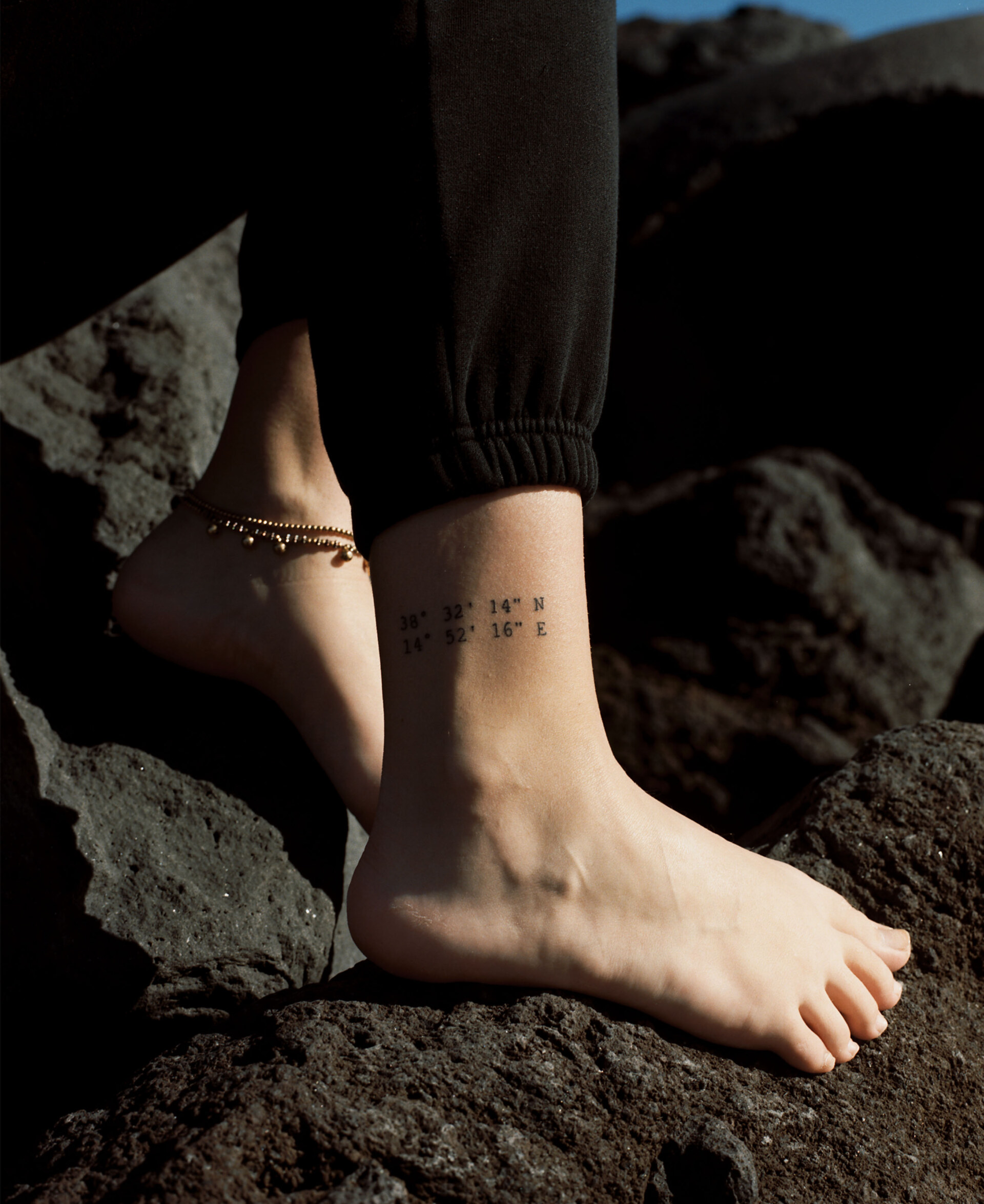
And then there’s Chiara, Ilana’s young sister, who is turning 18. She’s about to enter her last year of high school in Lipari. Chiara’s physical and emotional attachment to her home is just as strong as her sister’s. She loves dancing and performance, delighting Frigieri and a group of locals by performing traditional folk dances from the Aeolian Islands last year. Chiara leads a fairly typical teenage life on the islands; going to school in winter, going out with friends on the weekends, and working full-time in summer. Dear Nicolò is the young man who often appears in Frigieri’s photos. He has been living on Salina all his life and has a very strong attachment to the sea, despite nobody in his family ever being a fisherman or working in the naval sector. When Frigieri asked him to name the place on the island associated with his best memory, he responded with: 38°37’00.0″N 14°54’03.7″E. These are, of course, the geographical coordinates (at sea!) for La Secca del Capo, his favorite diving site, rich in huge cave fish, peculiar-shaped rocks, and other deep-sea creatures.
Frigieri, with her sensitive spirit and her Rolleiflex camera, talks to these Aeolian teenagers, listens to them, and hears them in a way they had perhaps not been heard before. Understandably, some were shy at first, wary of a stranger who had essentially stepped into their families and their lives. But it didn’t take long for their shyness to turn into enthusiasm for her project–and her presence around the islands more generally. Frigieri has become close to these teenagers in the three years she has been developing her project, maybe even too close she feels. The more time she spends with them, the more difficult it is for her to emotionally distance herself from their lives in order to maintain an “objective” photographic perspective.
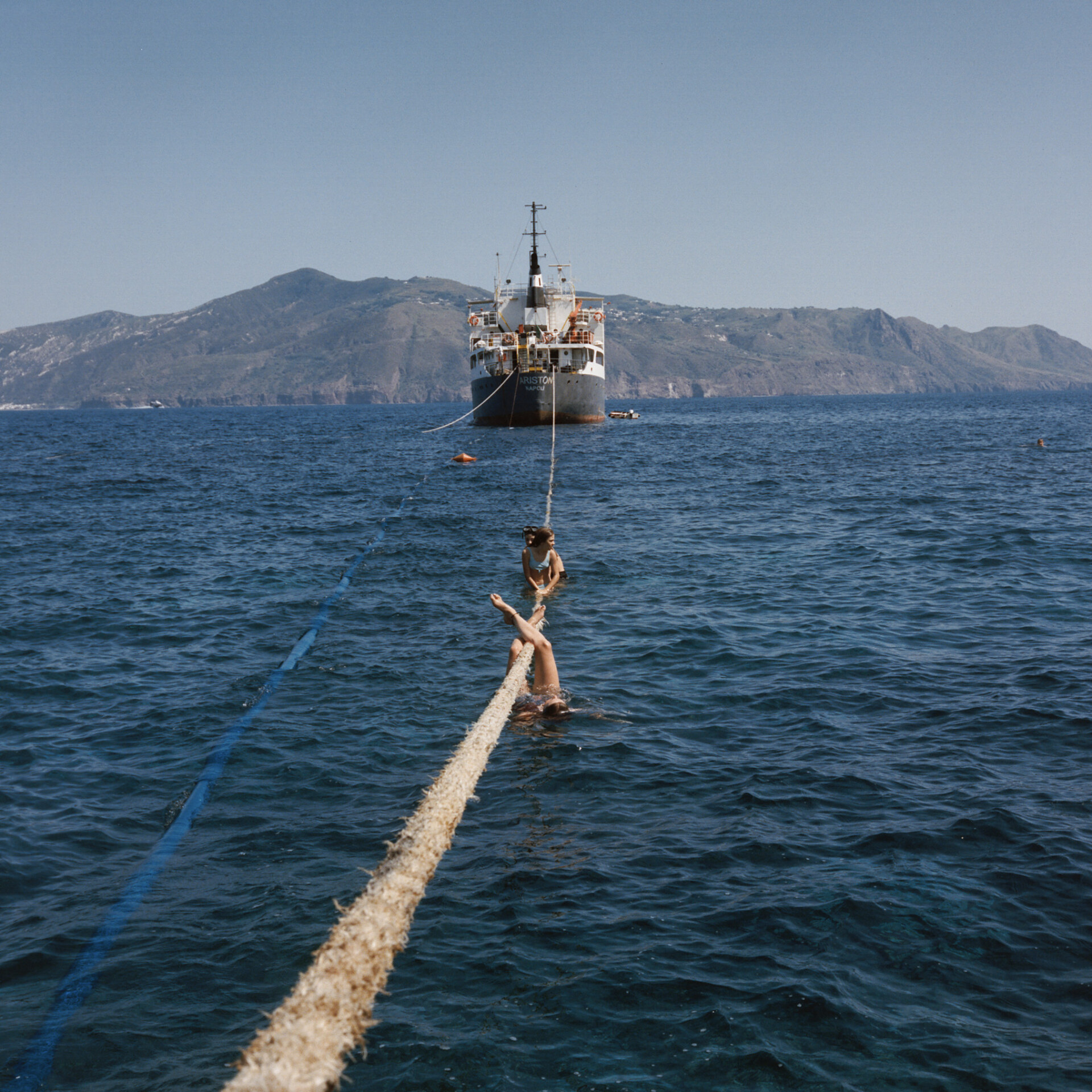
“I have become especially close to the kids in Salina. Now it feels very natural to photograph them, and just to be around them. I go with them to eat lunch at their nonnas’ houses, I go with them when they take their boats out, and I’ve even been to one of the few clubs on the island with them. The other day there was a first communion of the twins in Salina (Ondina and Corallina) and they called me to say how sad they were that I couldn’t be there,” she shares.
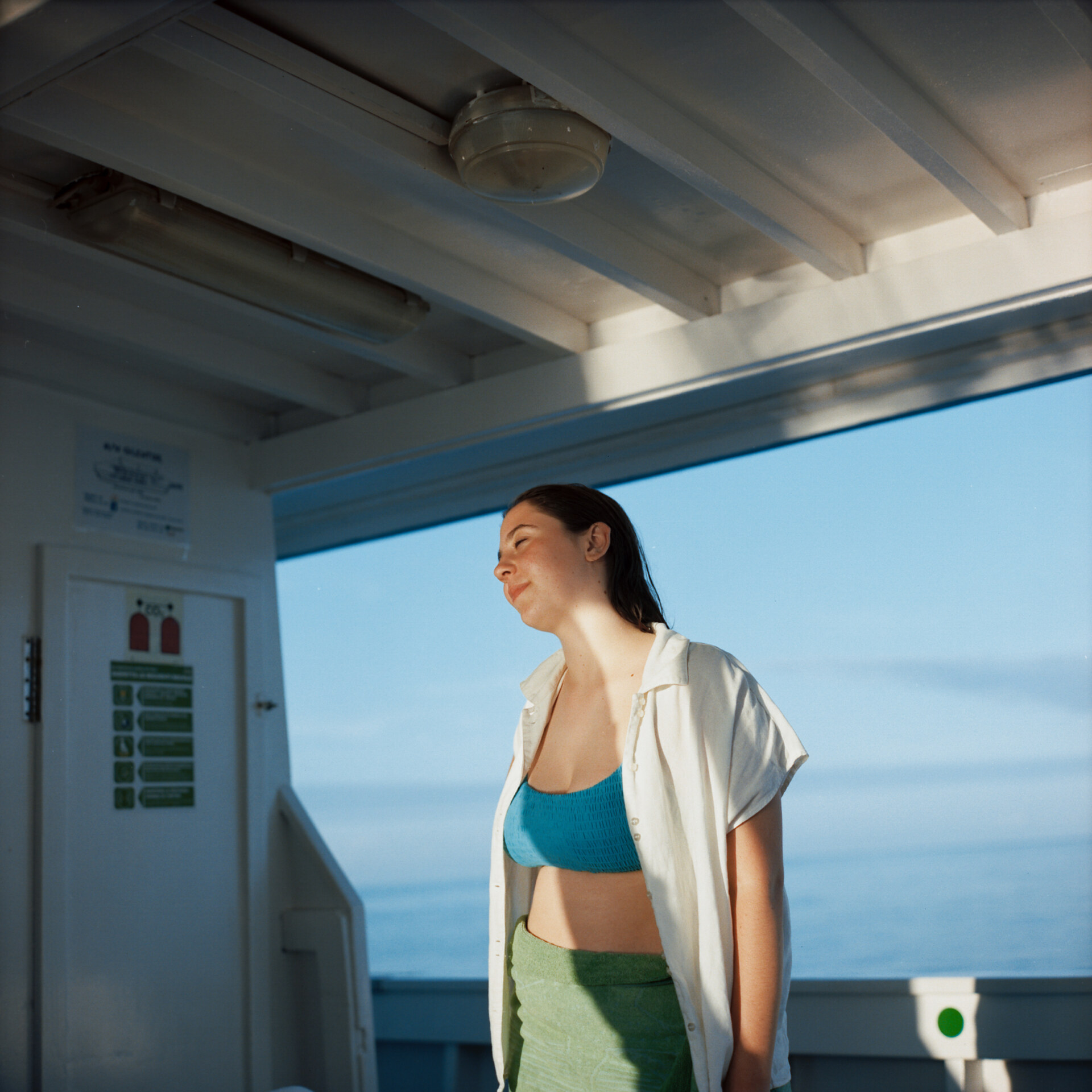
Candid and innocent, with an atmospheric intensity cast by the elements, Generazione Vulcano captures the carefree spirit of these teens in nonchalant and “everyday” moments; boyfriend and girlfriend lapping up the sun on the lungomare, two best friends relishing a moment of salty bliss in the Tyrrhenian Sea, a night out in the boat waiting for the totani to bite. The teens’ free-spirited approach to life is juxtaposed against the unpredictable mystique of the islands’ immense land and seascapes, creating a poetic tension between humans and nature, between familiarity and uncertainty, between present and future.
Frigieri’s perception of the islands’ temporal dynamic is equally as profound. She appreciates that these teenagers’ sense of time is a product of their geographic location, shaped by the rhythms and cycles of nature which has given them an innate sense of patience and perspective. There’s no jumping in the metro and heading off to a friend’s birthday on the other side of town. If the party is in Panarea and the sea is looking turbulent, the teens have to choose between leaving three days early or missing out. As they have told Frigieri, good things take time, and it’s worth waiting for them to happen.
“I think these kids have a different sense of time to other teenagers who are growing up in the cities. It’s not that they don’t have access to technology or social media. Of course they do. But they have a different sense of time because they can’t get whatever they want exactly when they want it given their remote geographical location. They are at the mercy of the sea and the wind, and they have learnt to be patient,” says the photographer.
The fact is that Stromboli could erupt at any moment. So could Vulcano. Without much warning, these volcanoes could indeed obliterate the entire archipelago via an explosion followed by a surge of volcano-generated tsunamis, landslides, gas clouds, debris, and all the other red-alerts that can be expected in such a high risk zone. But for teenagers living on the Aeolian Islands, life goes on, and there are plenty of other things to think about. After all, nothing stops teenagers from being teenagers. Not even a volcano or two.
